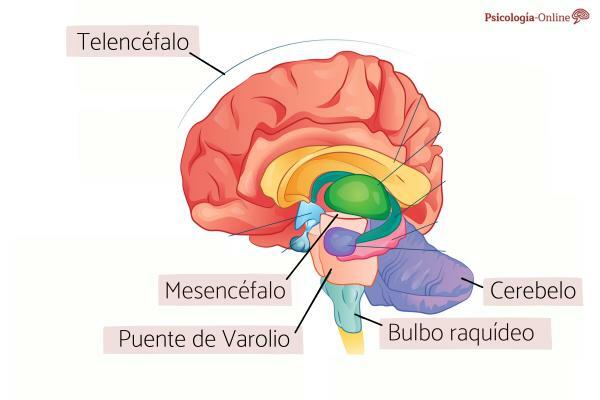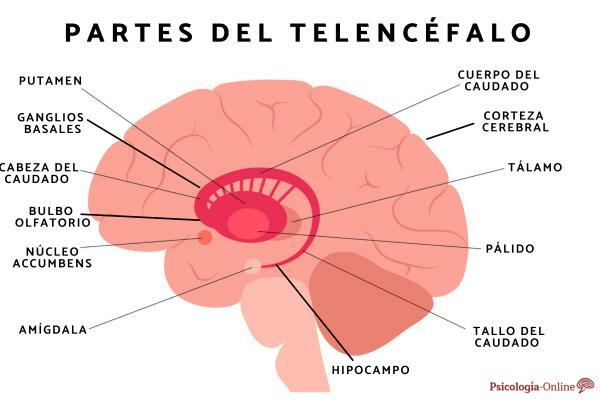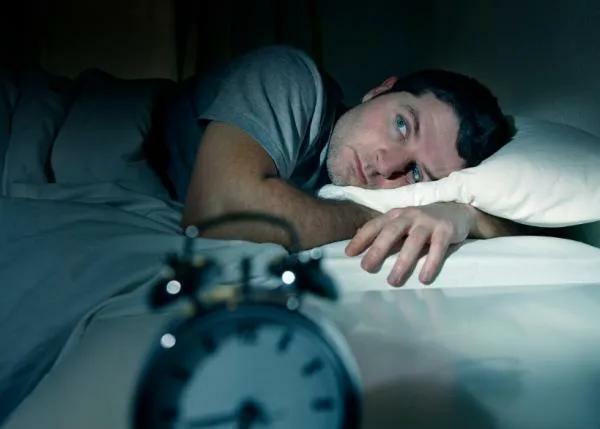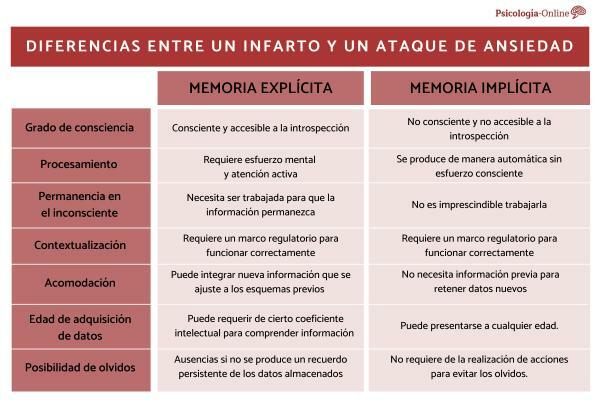
The brain is the most complex organ of the human being, since it is made up of a wide variety of components that are responsible for carrying out numerous functions and processes. Knowing the anatomy of our brain allows us to improve in the learning sector. As well as, for example, scientifically advance in disease research or in the development of drugs necessary for the treatment of certain pathologies.
We tend to know some of the functions that are developed by the human brain, but it is difficult for us to differentiate and identify which part of the brain is responsible for carrying them out. Therefore, in this Online Psychology article we offer you information about one of the components of the human brain, the telencephalon: what it is, parts and functions.
Index
- What is the telencephalon
- Parts of the telencephalon
- Functions of the telencephalon
What is the telencephalon.
To know the definition of the telencephalon, it is essential that you know that it is part of the brain, the organ in charge of controlling all the functions that the human being performs. Specifically, the telencephalon is the largest part of the brain and is considered the most developed structure of the brain.
It's located on the diencephalon, query Diencephalon: what it is, parts and functions to further position it correctly. On the other hand, the telencephalon represents the rough surface that characterizes the human brain. This structure of the human brain is divided into two hemispheres partially symmetrical, located to the left and right of the head, respectively.
Similarly, the telencephalon is made up of different structures or parts that are connected and synchronized with each other. Since these structures are not self-sufficient by themselves and they need each other to carry out their functions. They are mainly in charge of carrying out the voluntary actions of the human being and to facilitate the experimentation of complex emotions. It could be said that the telencephalon is one of the aspects that differentiates us from other living beings, such as animals.
Parts of the telencephalon.
What are the parts and functions of the brain? As noted in the previous section, the telencephalon is made up of various parts or structures that work together for its proper development. The different parts that make up the telencephalon are defined below:
- Cerebral cortex: This structure of the telencephalon is composed of Gray matter. As well as, by neurons you coordinate with each other. This structure constitutes the most visible layer of the brain, made up of folds and ridges.
- Hippocampus: the hippocampus is a structure that intervenes in numerous processes and whose involvement can lead to amnesia. It is primarily responsible for the consolidation and evocation of memories. We leave you this other post in case you are interested in knowing in detail What is the hippocampus and what is its function?
- Brain tonsil: This structure is located in both hemispheres within the temporal lobes. In addition, it is one of the components of the limbic system, a set of cells intended for emotional regulation. This structure is responsible for the emotional memory, that is, of the consolidation of emotional reactions.
- Striated body: this structure acts as information channel, serving as a source of data towards the basal ganglia. Therefore, it is an active part of the development of automated movements. Click on the following article to learn more about the Striated nucleus: what it is, function and location.
- Olfactory bulb: the olfactory bulb is the structure in charge of receiving information about the smells incoming through the nose, as it is located close to the cerebral cortex. Once this information is received, it is sent to the brain through the olfactory tracts.
- Basal ganglia: this structure is located on both sides of the thalamus, a small structure designed to relay the sensory cues to the brain. The basal ganglia are made up of a set of gray matter, characterized by being made up of numerous connections with other parts of the brain. Its main function is related to voluntary movements and their automation.

Functions of the telencephalon.
You already know what the telencephalon is, it is time for you to know what its functions are. On the one hand, in a general way, the telencephalon fulfills various functions and participates in numerous brain processes due to the great variety of structures that compose it.
If you wonder what is the main function of the telencephalon, globally, it is responsible for perceiving and integrate all the information captured by the cerebral cortex so that the brain can manage it and generate the response most appropriate for each situation. Which allows you to develop complex physical, intellectual and emotional functions. At a specific level, it has the following functionalities:
- Voluntary movements.
- Experience emotions,
- Reasoning and being aware of what surrounds us.
- Develop thoughts abstract.
- Empathize, consolidate and manage memories through memory.
- Have intellectual abilities.
- Automate movements.
- Manage the sensations.
As mentioned above, the telencephalon is one of the most complex structures in the human brain. thanks to the set of parts that compose it and allow the transmission of different types of information that facilitate adaptation from the human being to the different stimuli from the outside.
This article is merely informative, in Psychology-Online we do not have the power to make a diagnosis or recommend a treatment. We invite you to go to a psychologist to treat your particular case.
If you want to read more articles similar to Telencephalon: what it is, parts and functions, we recommend that you enter our category of Neuropsychology.
Bibliography
- Allen, J. S., Bruss, J., & Damasio, H. (2005). Structure of the human brain. Research and science, 340, 68-75. Available in: http://amscimag.sigmaxi.org/4Lane/ForeignPDF/2004-05AllenSpan.pdf
- Diamond, M. C., Scheibel, A. B., & Elson, L. M. (1996). The human brain. Ariel Neuroscience. Available in: https://planetadelibrospe0.cdnstatics.com/libros_contenido_extra/28/27903_El%20cerebro%20humano.pdf
- Menéndez, R. B. (2010). The fundamental logical structures and their representation in the human brain. Eikasia: Philosophy Magazine, (32), 140-172. Available in: https://www.revistadefilosofia.org/32-07.pdf
- Rodríguez López, A. (2017). Topographic study of the neuronal populations of the múgil telencephalon. Available in: http://hdl.handle.net/2183/19627


